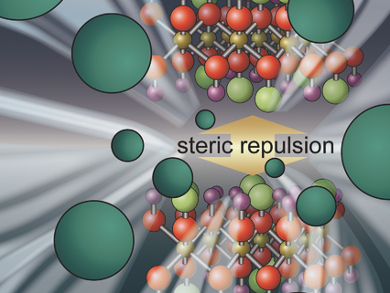Lithium-ion batteries (LIBs) store energy by lithium-ion intercalation into the host electrode material. Unfortunately, the Li-ion (de)intercalation in LIBs is limited by slow ion transfer. One solution is the use of pseudocapacity electrodes. Pseudocapacitance is a energy storage mechanism resulting in high capacitance and high charge/discharge rates using surface redox chemistries. Li-ion hybrid capacitors with one pseudocapacitive porous carbon cathode and an intercalation type anode or vice versa are of special interest. Thier energy and power densities, however, are not yet satisfactory.
Atsuo Yamada, University of Tokyo and Kyoto University, Japan, and colleagues used MXenes, a pseudocapacitor-like electrode material. MXenes of the type Mn+1XnTx (M = Ti, V, Cr, Nb, etc.; X = C, N; n = 1–3; T = surface termination groups) consist of layers of transition metal carbides, nitrides, or carbonitrides that are a few atoms thick, which allow very fast ion accessibility to redox sites. The researchers could show that steric chloride termination in the MXene Ti2CTx expands the interlayer space between the individual two-dimensional Ti2CTx sheets.
This open interlayer space significantly enhances the Li-ion accessibility, leading to increasing gravimetric and volumetric capacitances with less diffusion limitation. A Li-ion hybrid capacitor which uses a Ti2CTx negative electrode has a specific energy density of 160 W h kg−1 at 220 W kg−1.
- Enhanced Li-Ion Accessibility in MXene Titanium Carbide by Steric Chloride Termination,
Satoshi Kajiyama, Lucie Szabova, Hiroki Iinuma, Akira Sugahara, Kazuma Gotoh, Keitaro Sodeyama, Yoshitaka Tateyama, Masashi Okubo, Atsuo Yamada,
Adv. Energy Mater. 2017.
DOI: 10.1002/aenm.201601873




